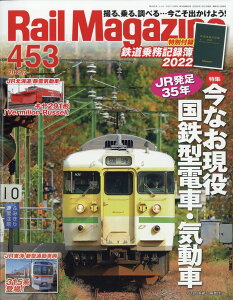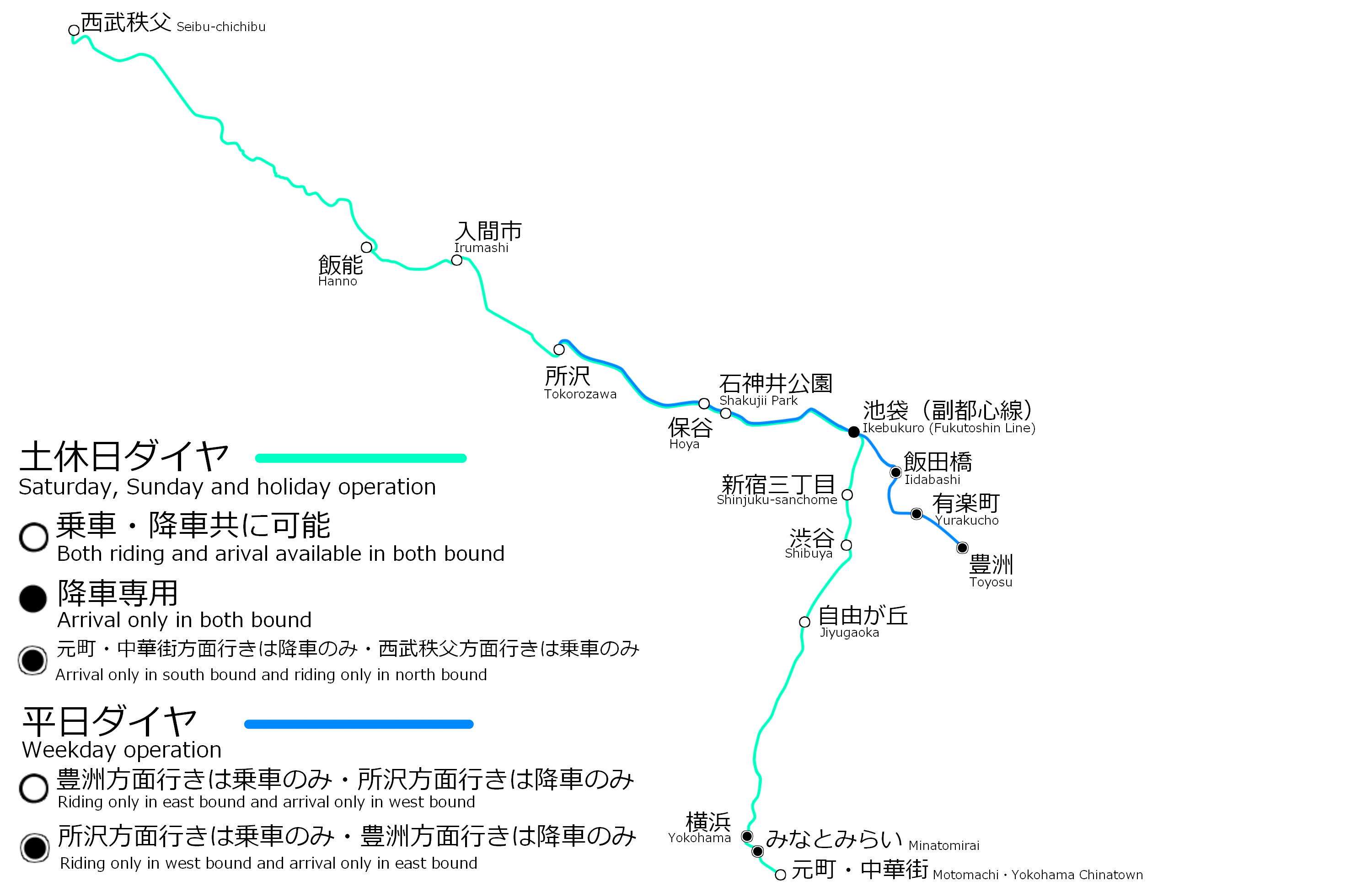PR
X
キーワードサーチ
▼キーワード検索
カレンダー
サイド自由欄
鉄道模型・鉄道グッズリンク
鉄道関連書籍リンク
時刻表最新号
JTB時刻表

JR時刻表

鉄道雑誌最新号
鉄道ファン

鉄道ジャーナル

鉄道ピクトリアル

鉄道ダイヤ情報

Rail Magazine

RM MODELS

j train

とれいん

鉄道模型趣味

N

旅と鉄道

楽天トラベルで旅に出よう

鉄道関連書籍リンク
時刻表最新号
JTB時刻表

JR時刻表

鉄道雑誌最新号
鉄道ファン

鉄道ジャーナル

鉄道ピクトリアル

鉄道ダイヤ情報

Rail Magazine

RM MODELS

j train

とれいん

鉄道模型趣味

N

旅と鉄道

楽天トラベルで旅に出よう
コメント新着
テーマ: 鉄道(23070)
カテゴリ: 鉄道ミニエッセイ
2017(平成29)年期待の新星の1車種、西武40000系が「S-TRAIN」の列車愛称で3月25日にデビューすることが1月10日に西武鉄道と運行各社(東京メトロ・東急電鉄・横浜高速鉄道)から発表された。
同時にダイヤと指定席料金も発表され、土休日は元町・中華街駅~所沢駅・飯能駅・西武秩父駅間(西武秩父駅発着・飯能駅発着各1往復、所沢行き北行き1本)、平日は豊洲駅~所沢駅間で運行される。
停車駅は、土休日の元町・中華街駅発着列車が、
元町・中華街 - みなとみらい - 横浜 - 自由が丘 - 渋谷 - 新宿三丁目 - 副都心線池袋 - 石神井公園- 所沢 - 入間市 - 飯能 - 西武秩父
平日の豊洲駅発着列車が、
豊洲 - 有楽町 - 飯田橋 - 石神井公園 - 保谷 - 所沢
となる。

なお、土休日ダイヤでは、横浜駅とみなとみらい駅は南行き(元町・中華街方面行き)の場合は降車専用駅、北行き(所沢・飯能・西武秩父方面行き)の場合は乗車専用駅、副都心線池袋駅は南行き・北行き共に降車専用駅となる。また副都心線内のみの乗車もできない。平日ダイヤでは、東行き(豊洲方面行き)の場合、保谷駅と石神井公園駅が乗車専用駅、飯田橋駅と有楽町駅が降車専用駅となり、西行き(所沢方面行き)の場合はその逆で、有楽町駅と飯田橋駅が乗車専用駅、石神井公園駅と保谷駅が降車専用駅となる。
土休日ダイヤでは元町・中華街駅~西武秩父駅間を北行きは2時間14分、南行きは2時間33分で、平日ダイヤでは豊洲駅~所沢駅間を最速58分で結ぶ。
指定料金は、主要駅間を見ると、土休日ダイヤの元町・中華街駅および横浜駅から渋谷駅までが350円、副都心線池袋駅までが560円、飯能駅までが860円、西武秩父駅までが1060円、平日ダイヤは東京メトロ有楽町線各駅~池袋線各駅間いずれも510円となる。
西武鉄道・東京メトロ・東京急行電鉄・横浜高速鉄道が西武鉄道の新型車両40000系を使用した座席指定列車を西武池袋線~東京メトロ有楽町線、および西武西武秩父線・池袋線~東京メトロ副都心線~東急東横線~横浜高速鉄道みなとみらい線での運行を開始すると発表したは、2016(平成28)6月16日のことだった。
西武鉄道では初めてのロング・クロス両用のデュアルシートを備える車両である40000系を投入し、通勤型車両でありながらクロスシート時の特性を活かした座席指定列車としたこと、そしてそれまで追加料金が必要な座席指定もしくは整理券制の列車がなかった東急電鉄と横浜高速鉄道では、他社の車両で運行されるものの初めての座席指定列車が運行されることから、鉄道ファンから大きな注目を集めていた。
これより、僕の考察を書き表す。
停車駅については、僕はこの発表がある以前から、「S-TRAIN」の停車駅を予想していた。以下に僕の予想を示す。
土休日ダイヤ
元町・中華街 - 横浜 - (武蔵小杉) - 渋谷 - 新宿三丁目 - 副都心線池袋 - 練馬 - 所沢 - 入間市 - 飯能 - 西武秩父
平日ダイヤ
新木場 - 豊洲 - 有楽町 - 永田町 - 飯田橋 - 有楽町線池袋 - 練馬 - 所沢 - 入間市 - 飯能
最初に土休日ダイヤの副都心線・東横線・みなとみらい線方面の列車については、みなとみらい線・東横線内は横浜高速鉄道と東急電鉄にとっては座席指定列車の運行は初めてであることから、現行の東横線・みなとみらい線の最速列車、東横特急(Fライナー)よりも停車駅が少ないものになると予想していた。僕の予想は、2001(平成13)年に東横特急が運行を開始した当初と同様に、それまで急行が停まっていた、なおかつ東急電鉄にとっては歴史上重要な駅であった田園調布駅や日吉駅を思い切って通過させた前例があることから、今回も思い切って減らした、横浜駅~渋谷駅間ノンストップ、もしくは路線全体のほぼ中間に武蔵小杉駅のみ停車というパターンだったが、結果は途中駅は自由が丘駅のみ停車というものとなった。
副都心線内も、急行列車が停車する明治神宮前駅(2008(平成20)年の開業当初は急行列車も明治神宮前駅を通過していた)と、東京メトロと西武鉄道の境界駅である小竹向原駅が通過駅となる点は予想通りだった。
池袋線・西武秩父線内の停車駅は、ほぼ特急レッドアロー号のものに準じたものとなることを予想していたが、以前にも書いたとおり、飯能駅~西武秩父駅間の駅で10両分の長さのホームを持つものは飯能駅・東飯能駅・西武秩父駅の3駅だけであることから、池袋駅発の特急レッドアロー号が停車する横瀬駅には10両編成の40000系は停車しないと見ていた点は予想通りであった。反面、西武有楽町線と池袋線で保安装置の違いがあるため、両線の接続駅である練馬駅には停車すると見ていたが、通過駅となり、石神井公園駅に停車するパターンとなった。
続いて平日ダイヤの東京メトロ有楽町線方面の列車については、豊洲駅~所沢駅間の運行であるということが予想から大きくずれた。日中に運行される東京メトロ有楽町線直通列車が新木場駅~小手指駅間での運行であるため、それよりも長距離での利用を意識した列車になると予想し、新木場駅~飯能駅での運行を予想していた。
東京メトロ有楽町線内の停車駅は、かつて不定期に運行されていた、小田急小田原線・東京メトロ千代田線から東京メトロ有楽町線へ直通していた特急「ベイリゾート」の停車駅も参考にしながら予想したが、駅周辺にオフィス街が広がる飯田橋駅と有楽町駅に停車することは正解だったが、官庁街に近い永田町駅は通過となった。そして、利用客が多い有楽町線池袋駅が通過駅となったという点は、池袋駅の混雑を解消するための施策であると見て取れる。

続いて所要時間の点では、元町・中華街駅および横浜駅から池袋駅では、東横特急・副都心線急行(Fライナー)と比べて停車駅が4駅も少ない(「S-TRAIN」は東横特急の停車駅のうち菊名駅、武蔵小杉駅、中目黒駅を、副都心線急行列車の停車駅のうち明治神宮前駅を通過する)にもかかわらず、1分の短縮にしかなっていないうえに、所沢駅もしくは飯能駅まででは、「S-TRAIN」のほうが1分長くなってしまう。「S-TRAIN」が朝と夕方・夜間のみの運行であり、時間帯の違いを考慮しても、停車駅が少ないことを活かせていないと言いたい。
3点目は、みなとみらい線内における誤乗対策である。「S-TRAIN」の休日ダイヤの停車駅が東横特急(Fライナー)と同じとなったにも関わらず、みなとみらい線内のみの乗車が南行き・北行き共にできない点に。
「S-TRAIN」のみなとみらい線内の停車駅が横浜駅・みなとみらい駅・元町・中華街駅と東横特急(Fライナー)と同じであることから、南行き列車のみを対象に、みなとみらい線内のみを座席指定料金なしで「S-TRAIN」の空席に座れるようにしてはいかがだろうか(当然満席の場合は乗車不可)。
南行き列車の場合、自由が丘駅以北からの乗車の場合は横浜駅より先は降車専用でも構わないが、「S-TRAIN」に完全にみなとみらい線内のみの乗車ができなくしてしまうと、指定券のない誤乗が少なからず発生してしまうだろうとみられる。そのため、みなとみらい線内は横浜駅以北からの乗客が減少する一方であることから、東横特急(Fライナー)と停車駅の面で差別化できなかった代償という訳ではないが、みなとみらい線内のみを指定券なしで「S-TRAIN」に乗車できるようにすると、より利便性が向上するのではないだろうか。
なお北行き列車はみなとみらい線・東横線から副都心線・池袋線・西武秩父線方面への速達列車という性格が強いことから、前述の特例は設けない。
最後に、1つ残る疑問点として、元町・中華街駅発着、豊洲駅発着のどちらも東京メトロと西武鉄道の境界駅である小竹向原駅と、保安装置が違う西武有楽町線と池袋線の接続駅である練馬駅が停車駅とならなかった点である。ということは、土休日ダイヤの副都心線池袋駅~石神井公園駅間、ならびに平日ダイヤの飯田橋駅~石神井公園駅間では、小竹向原駅と練馬駅で2回の運転停車(乗客の乗り降りができない停車)が発生してしまうかもしれないということである。
小竹向原駅は東京メトロと西武鉄道の事業者境界駅であるため、同駅で乗務員交代(副都心線からの列車の場合は自動運転から手動運転への切り替えも実施)のための運転停車が実施されるものとみられるが、練馬駅では、西武有楽町線と池袋線で保安装置の違いがあるため、保安装置の切り替えが必要となる。もしも40000系が保安装置の自動切り替えができない場合には、小竹向原駅で乗務員交代と運転モードの切り替え(土休日ダイヤの場合)、練馬駅で保安装置切り替えのための運転停車が立て続けに発生してしまう。そしてこれらの運転停車が、所要時間短縮の大きな壁となっていることだろう。
所要時間の短縮には、土休日ダイヤにおける東京メトロ副都心線のうち、池袋駅~小竹向原駅間はATO運転ではなく手動運転とし、車両に保安装置自動切り替え機能を取り付け、小竹向原駅と練馬駅では通過時に保安装置を自動で切り替えられるようにするなどの工夫が必要であると言いたい。
確実に着席できるという点では「S-TRAIN」は魅力的な列車と言えるが、現段階では所要時間の短縮が課題と言えよう。東横線・副都心線の最大の課題とも言うべき、JR東日本湘南新宿ラインとの競争で優位に立つには、横浜駅~渋谷駅および池袋駅の所要時間を、今回発表されたダイヤよりもさらに2分程度短縮させる必要があると言いたい。
着席保証と所要時間の短縮の2点で「S-TRAIN」の導入効果を得られるのは、現段階ではそれまで直通する全列車が練馬駅~豊洲駅間各駅停車だった東京メトロ有楽町線内にも通過駅がある平日ダイヤと、休日ダイヤではそれまで直通する列車が運行されていなかった元町・中華街駅、みなとみらい駅、横浜駅から西武秩父駅まで乗車した場合に限られるであろう。
僕個人の気持ちとしても、停車駅が東横特急(Fライナー)よりも少ないことに過剰な期待を寄せてしまったことを反省している。
運行開始時点では、40000系が2編成しか在籍していないため、運行本数が少ない状況となるが、今後40000系が増備され次第、「S-TRAIN」の運行本数も増発され、より利便性の高い列車となることを期待したい。
On January 10th, Seibu Railway and relative railway companies, Tokyo Metro, Tokyu Corporation, and Yokohama Minatomirai Railway, announced that a new reserved-seating train named "S-TRAIN", operated by Seibu 40000 Series, would start to run on March 25, 2017, which would run between Seibu-chichibu Station on Seibu Seibu-chichibu Line and Motomachi-chukagai [Motomachi・Yokohama Chinatown] Station on Yokohama Minatomirai Railway Line on Saturdays and holidays, and does between Toyosu Station on Tokyo Metro Yurakucho Line and Tokorozawa Station on Seibu Ikebukuro Line.
Reserved-seating charge and timetable were also announced. "S-TRAIN" stops at Motomachi-chukagai [Motomachi・Yokohama Chinatown], Minatomirai, Yokohama, Jiyugaoka, Shibuya, Shinjuku-sanchome, Ikebukuro (on Fukutoshin Line), Shakuji-koen [Shakujii Park], Tokorozawa, Irumashi, Hanno, and Seibu-chichibu Stations in Saturday and holiday service, and Toyosu, Yurakucho, Iidabashi, Shakuji-koen [Shakujii Park], Hoya, Tokorozawa Stations in weekday service.
It takes 2 hours and 14 minutes (north bound)/2 hours 33 minutes (south bound) between Motomachi-chukagai [Motomachi・Yokohama Chinatown] and Seibu-chichibu, and it does 58 minutes as the fastest between Toyosu and Tokorozawa. Seating charge costs 350 yen to Shibuya, 560 yen to Ikebukuro, 860 yen to Hanno, and 1060 yen to Seibu-chichibu from Motomachi-chukagai [Motomachi・Yokohama Chinatown] or Yokohama, and 510 yen wholly within the weekday services.
Riding only on Fukutoshin Line or Yokohama Minatomirai Railway Line on Saturdays and holidays isn't available.
When the press release that a reserved-seating train by Seibu 40000 Series, which was first Seibu Railway car convertible seating between longitudinal and forward-facing, would debut was announced was June 16, 2016. Many railfans paid attention to it because not only reserved-seating commuter train, but it was first train that passengers required an additional charge on Tokyu Corporation and Yokohama Minatomirai Railway.
From here, I would like to write my opinion.
At first, I would like to treat the stations. Before the stations at which "S-TRAIN" stops were officially announced, I expected which stations "S-TRAIN" stopped. My expectation was as follows.
On Saturdays and holidays, Motomachi-chukagai [Motomachi・Yokohama Chinatown], Yokohama, Musashi-kosugi (not all trains), Shibuya, Shinjuku-sanchome, Ikebukuro (on Fukutoshin Line), Nerima, Tokorozawa, Irumashi, Hanno, Seibu-chichibu, and on weekdays, Shin-kiba, Toyosu, Yurakucho, Nagatacho, Iidabashi, Ikebukuro (on Yurakucho Line), Nerima, Tokorozawa, Irumashi, Hanno.
On Tokyu Toyoko Line and Yokohama Minatomirai Railway Line, the stations could be less than those of limited express (F-Liner), the fastest train stopping at Motomachi-chukagai [Motomachi・Yokohama Chinatown], Minatomirai, Yokohama, Kikuna, Musashi-kosugi, Jiyugaoka, Nakameguro and Shibuya, which almost comes true. My expectation was no middle station or only one middle station, such as Musashi-kosugi, would stop because limited express train passes Den-en-chofu Station and Hiyoshi Station, both of which are regarded as the most important stations in the history and express train stops. Comparing the result to my expectation, stopping only one middle station is the same, but it is Jiyugaoka.
On Fukutoshin Line, it is the completely same as my expectation. Just like Toyoko Line and Yokohama Minatomirai Railway Line, the stations at which "S-TRAIN" stops is less than those of express (F-Liner), which stops at Shibuya, Meiji-jingu-mae [Meiji Jingu Shrine], Shinjuku-sanchome, Ikebukuro, and Kotake-mukaihara; it stops at Shibuya, Shinjuku-sanchome, and Ikebukuro only.
On Seibu Yurakucho Line and Ikebukuro Line I expect "S-TRAIN" would stop at the almost same stations as those of limited express "Red Arrow" from Ikebukuro on Ikebukuro Line, but, as I wrote before, 10-car "S-TRAIN" wouldn't stop at Yokoze Station because of the length of platform, which also comes true. On the other hand, Nerima Station doesn't stop (or stops but no passengers can't get on or off).
It fell short of my expectation that "S-TRAIN" on weekday would operate between Shin-kiba and Hanno actually to operate between Toyosu and Tokorozawa.
I expected that "S-TRAIN" on weekday would operate longer than local train on daytime (between Shin-kiba and Kotesashi) to target passengers going farther than Kotesashi.
My expectation which station "S-TRAIN" would stop on Tokyo Metro Yurakucho Line was based on those of "Bay Resort" limited express, which used to operate on Odakyu Odawara Line, Tokyo Metro Chiyoda Line, and Tokyo Metro Yurakucho Line.
Comparing to my expectation, Nagatacho Station and Ikebukuro Station aren't chosen.
I see why "S-TRAIN" doesn't stop at Ikebukuro Station on Tokyo Metro Yurakucho Line may be to decrease the crowdedness.
The second is travel time. Though "S-TRAIN" stops at less stations than limited express ("F-Liner"), it could shorten its travel time only one minute than limited express between Motomachi-chukagai [Motomachi・Yokohama Chinatown] or Yokohama and Ikebukuro and takes more one minute between Motomachi-chukagai [Motomachi・Yokohama Chinatown] or Yokohama and Tokorozawa or Hanno. I would like to say that "S-TRAIN" couldn't fully use its merit.
The third is the solution for wrong ride on Yokohama Minatomirai Railway Line.
Though it stops at the same stations as limited express (F-Liner) on Yokohama Minatomirai Railway Line, no passengers can ride on south bound "S-TRAIN" only on Yokohama Minatomirai Railway Line, which can make some people confused and cause wrong ride.
It may be better to create new rule that passengers could ride on south bound "S-TRAIN" without seat reservation from Yokohama Station or Minatomirai Station because passengers travelling from farther than Jiyugaoka Station gradually decrease from Yokohama Station. The more passengers get off, the more unoccupied seatings there are in the train.
At last, I have a question; I wonder how to switch the safety devices or drive mode at Kotake-mukaihara Station, the border of Tokyo Metro Yurakucho Line or Fukutoshin Line and Seibu Yurakucho Line, and Nerima Station, the border of Seibu Yurakucho Line and Ikebukuro Line, both of which "S-TRAIN" passes on timetable, which means that "S-TRAIN" stops twice on its way to Shakuji-koen [Shakujii Park] Station both on Saturdays and holidays and weekdays.
At Kotake-mukaihara Station, the trains going through Seibu Yurakucho Line and Ikebukuro Line need to change driver and conductor because of the border between the two railway companies. In addition, in case of Fukutoshin Line trains, the driver changes its driving mode between automatic control to manual control. Though the timetable says that "S-TRAIN" passes Kotake-mukaihara, those both on Saturday and holiday and weekday also has to stop to change them.
Not only that, because Seibu Yurakucho Line and Ikebukuro Line introduce different safety devices, though the two lines are operated by the same company, "S-TRAIN" also has to stop at Nerima Station to switch between the two devices if the car doesn't install automatically-switcher for the safety devices.
"Pass" at Kotake-mukaihara and Nerima can mean that "no passengers can get on and off, in other words, stop only for change of driver and conductor, or switch between different safety devices."
It is needed to resolve the stops, such as making a transition from automatic control to manual control between Ikebukuro and Kotake-mukaihara on Fukutoshin Line and equipment of the automatically-switcher with the car.
"S-TRAIN" looks attractive from the point of view of a train ensuring the seating, but speed-up can be an issue. Especially, to be faster than JR East Shonan-shinjuku Line train between Yokohama and Shibuya or Ikebukuro, more two minute shortening is needed.
The travels reaping a benefit "S-TRAIN" may be weekday operation, on which all trains stop at all stations between Nerima and Toyosu, and between Yokohama Minatomirai Railway and Seibu-chichibu Line only.
I have to reflect on my overexpectation that the stations where "S-TRAIN" stops are less than limited express (F-Liner) leads the shortening the travelling time.
Seibu 40000 Series exists only two sets and "S-TRAIN" operates five times on Saturdays and holidays and seven times on weekdays a day from this coming March 25, but I look forward to being more "S-TRAIN" operates as more Seibu 40000 Series are built.
西武鉄道プレスリリース「2017年3月25日(土)から「S-TRAIN」運行開始!」 2017年1月10日
お気に入りの記事を「いいね!」で応援しよう
[鉄道ミニエッセイ] カテゴリの最新記事
-
683系「サンダーバード」に乗る Nov 23, 2021
-
"地下鉄のお嬢ちゃん"ステッカーの魅力 Sep 7, 2019
-
東急に「鉄道むすめ」がいない理由は「な… Aug 4, 2019
【毎日開催】
15記事にいいね!で1ポイント
10秒滞在
いいね!
--
/
--
© Rakuten Group, Inc.








